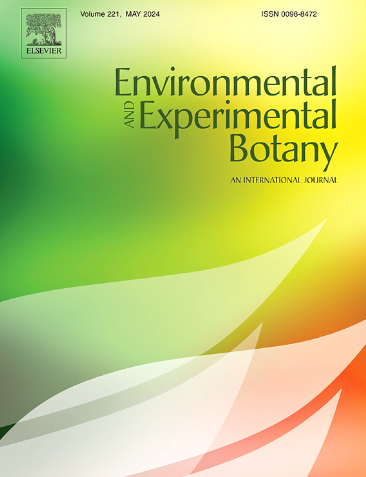Ozone exposure consistently increases δ13C in wheat grain
IF 4.7
2区 生物学
Q2 ENVIRONMENTAL SCIENCES
引用次数: 0
Abstract
Tropospheric ozone (O3) is a regional air pollutant, formed by solar radiation from nitrogen oxides and volatile organic compounds. It is known to impair crop yields. The mechanisms of O3 damage to plants are linked to gas exchange and carbon metabolism. The carbon isotopic signature in plant tissues represented by δ13C offers a time-integrating approach to assess the performance of plant gas exchange. We combined wheat grain δ13C data from seven O3 experiments performed in four countries (Switzerland, Spain, Sweden, United Kingdom). For one experiment δ13C data for stems were available. There was a significant positive relationship between grain δ13C and O3 exposure (R2=0.37). Using a relative scale to account for variation in the δ13C level among experiments, a stronger linear relationship was obtained (R2=0.77). Furthermore, the relative yield loss from O3 was negatively linked to the relative effect on δ13C (R2=0.72). Stems were more depleted in 13C than grain but also showed a significant, less steep, positive δ13C relationship with O3 exposure. The most important conclusion from the positive relationship between δ13C and O3 exposure is that the O3 effect on stomatal conductance dominates over the impairment of CO2 fixation by Rubisco. However, also discrimination associated with redistribution of carbohydrates from non-reproductive plant parts to grains can contribute to the O3 effect on δ13C. Based on the unified pattern of δ13C response over a range of experiments performed in different sites, we conclude that the mechanisms of O3 damage in wheat with respect to gas exchange are highly consistent.
臭氧暴露使小麦籽粒δ13C持续升高
对流层臭氧(O3)是一种区域性空气污染物,由氮氧化物和挥发性有机化合物的太阳辐射形成。众所周知,它会损害作物产量。臭氧对植物的危害机制与气体交换和碳代谢有关。以δ13C为代表的植物组织碳同位素特征为评估植物气体交换性能提供了一种时间积分方法。我们结合了在四个国家(瑞士、西班牙、瑞典和英国)进行的七个O3实验的小麦籽粒δ13C数据。其中一个实验获得了茎的δ13C数据。晶粒δ13C与O3暴露呈显著正相关(R2=0.37)。用相对尺度来解释实验间δ13C水平的变化,得到了较强的线性关系(R2=0.77)。此外,O3的相对产量损失与δ13C的相对影响呈负相关(R2=0.72)。茎秆在13C中比籽粒损耗更大,但δ13C与O3暴露呈显著正相关。从δ13C与O3暴露的正相关关系中得出的最重要的结论是,O3对气孔导度的影响大于Rubisco对CO2固定的损害。然而,与碳水化合物从非生殖植物部分重新分配到籽粒有关的歧视也可能导致O3对δ13C的影响。基于在不同地点进行的δ13C响应的统一模式,我们得出结论,在气体交换方面,小麦O3损伤的机制是高度一致的。
本文章由计算机程序翻译,如有差异,请以英文原文为准。
求助全文
约1分钟内获得全文
求助全文
来源期刊

Environmental and Experimental Botany
环境科学-环境科学
CiteScore
9.30
自引率
5.30%
发文量
342
审稿时长
26 days
期刊介绍:
Environmental and Experimental Botany (EEB) publishes research papers on the physical, chemical, biological, molecular mechanisms and processes involved in the responses of plants to their environment.
In addition to research papers, the journal includes review articles. Submission is in agreement with the Editors-in-Chief.
The Journal also publishes special issues which are built by invited guest editors and are related to the main themes of EEB.
The areas covered by the Journal include:
(1) Responses of plants to heavy metals and pollutants
(2) Plant/water interactions (salinity, drought, flooding)
(3) Responses of plants to radiations ranging from UV-B to infrared
(4) Plant/atmosphere relations (ozone, CO2 , temperature)
(5) Global change impacts on plant ecophysiology
(6) Biotic interactions involving environmental factors.
 求助内容:
求助内容: 应助结果提醒方式:
应助结果提醒方式:


